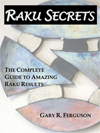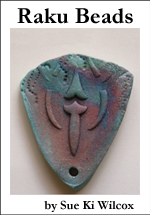|
|
|
October 2006 Issue
#43 In This Issue |
||
|
Books
Learn Dozens of Hints, Tips and Techniques in the free monthly newsletter Just
Raku Privacy Policy - Your email address or other personal information will only be used for this newsletter. It will never be given, rented, or sold to any other party for any other purposed. |
||
|
Gary R. Ferguson - Raku Artist (c) Copyright 2006, Gary R. Ferguson |
||



